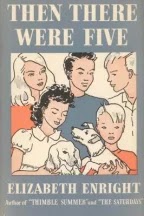It is one of my favorite series because the siblings are so distinct.
Here's the truth: writers tend to return to the same themes and characters and even, to an extent, plots over and over again (Agatha Christie's Adriane Oliver, her fictional version of herself, makes very funny comments about repeated plots).
When I am working on a novel, I use the Homer technique to keep my characters distinct. Homer is known for attaching adjectives to characters to remind us of their attributes: gray-eyed Athena, swift-footed Hermes. Although I believe in show-not-tell, I think this descriptive approach is an entirely valid technique, in part because--as a reader--I don't enjoy books where I can't tell the characters apart.
I also change dialog depending on a character's personality. That is, I ask myself, "Would this character be this blunt? Or this funny? Or this philosophical? Or this whimsical? I like that line--but would my character actually say it?"
The Donna Howard novels were such fun to write because the characterizations were relatively easy and remained stable over the series: wry, critical thinker Sammy; insouciant "que sera sera" Chester, and practical everywoman Donna could be thrown into a scene and have the most interesting conversations! (I love to read and write bantering dialog.)
Enright uses the techniques I mention above. She also uses a game that my family played when I was growing up--I don't know if the game was common to my parents' childhood (1940s) or if we got the game from Enright. It is a kind of 20 questions game but the answer is always a person, and the person has to be compared to animals or a piece of furniture. So, regarding Mark...
Mark turned out to be good Golden Bantam corn, a setter dog, a meadow lark, a maple tree, and many other pleasant reasonable things...Cuffy [the housekeeper and second mother] was like a pigeon...and a pearl...and a big healthy cabbage rose.
Enright KNOWS her characters, and that facility, perhaps, is the best place for a writer to start.



No comments:
Post a Comment